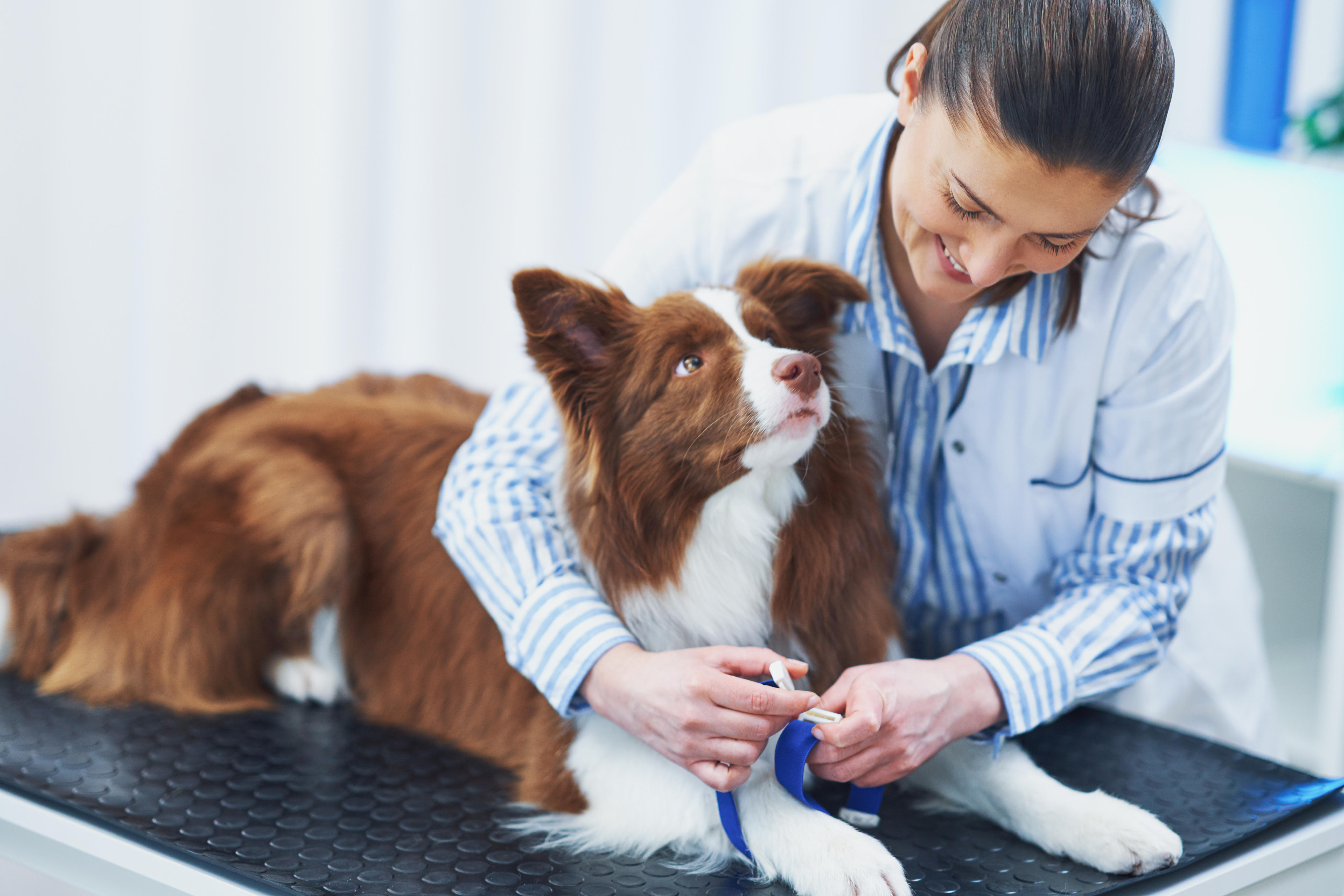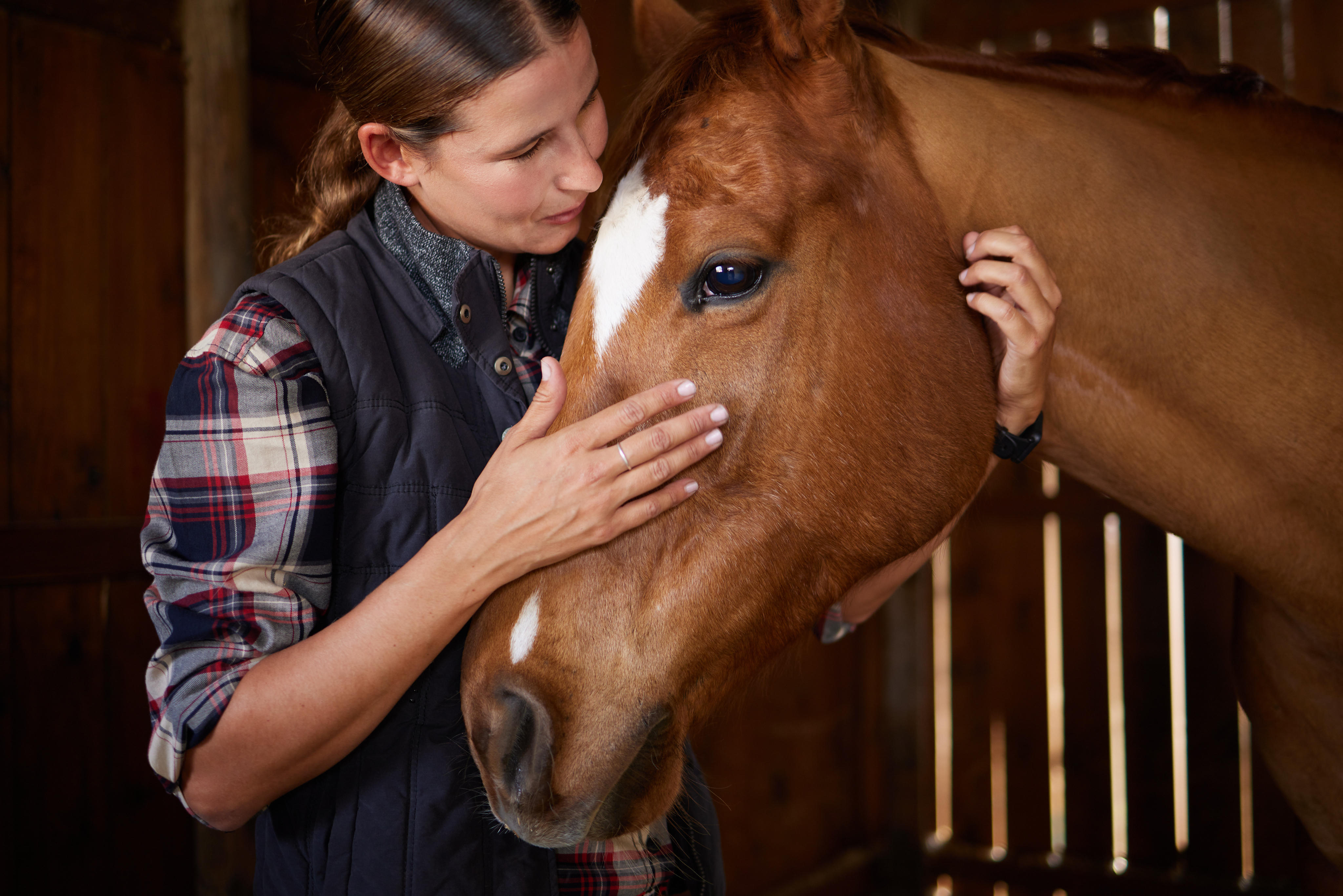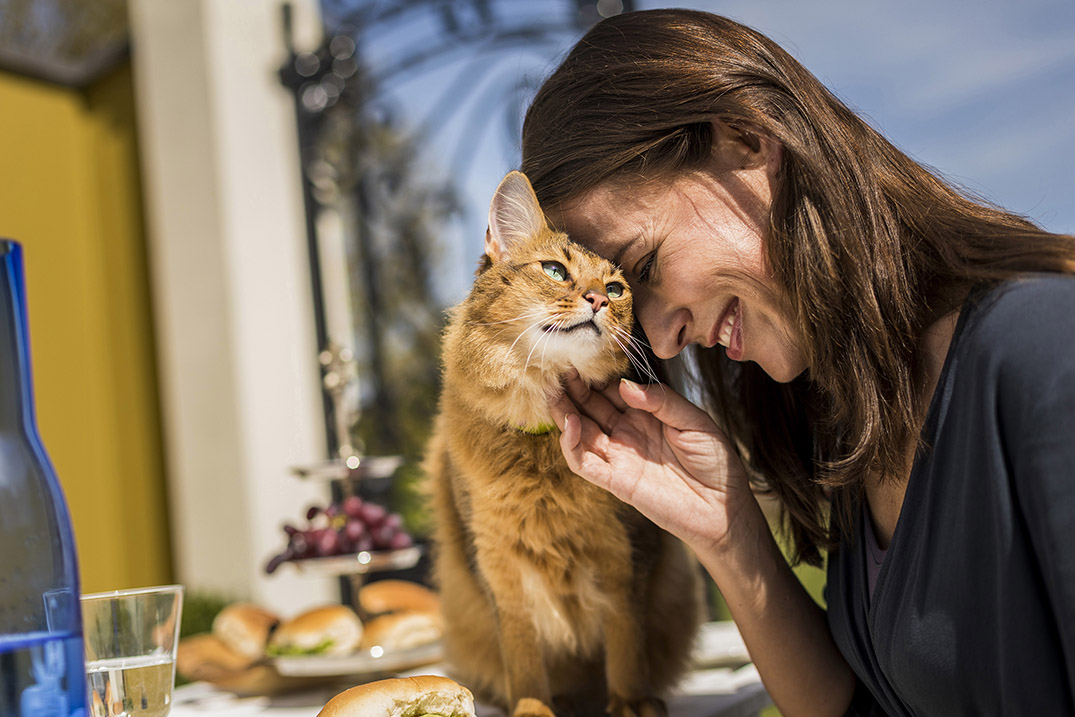Frequently Asked Questions
FOR DOGS
What is diabetes mellitus and what causes it?
Diabetes mellitus is caused by an absolute or relative deficiency of insulin. Animals with an absolute or relative deficiency of insulin are called diabetics.
Insulin deficiency can develop for different reasons:
- Disorders of the pancreas—the pancreas is unable to secrete enough insulin.
- Other diseases or the presence of other hormones—may be antagonistic to insulin or cause resistance to insulin. Insulin is unable to function normally in the body.
I have heard about diabetes insipidus; is this the same as diabetes mellitus?
No. Diabetes insipidus, also known as water diabetes, is caused when large amounts of dilute urine are produced. It is a far less common condition than diabetes mellitus. Diabetes insipidus is caused by problems in part of the brain or in the kidneys. There is no glucose present in the urine of animals with diabetes insipidus.
What signs do dogs with diabetes typically show?
The most common signs of diabetes mellitus in dogs are:
- Increased drinking
- Increased urination
- Increased appetite
- General signs, such as tiredness and poor coat condition
What do the terms polyuria, polydipsia, and polyphagia mean?
Polyuria is the production of large amounts of urine in a given period (eg, per day). Polydipsia is chronic excessive thirst. Polyphagia is great hunger.
My dog is having problems holding its urine; does that mean it has diabetes?
No, your dog could have a bladder or kidney infection, or some other medical problem. If your dog is having problems holding its urine, you should schedule a trip to your veterinarian as soon as possible.
How is diabetes diagnosed?
Your veterinarian will measure your dog’s blood glucose and test your dog’s urine for the presence of glucose and ketones. Persistently high blood glucose levels, along with glucose in the urine could mean that your dog has diabetes mellitus.
Can dog of any age get diabetes?
Dogs of all ages can get diabetes. Diabetes most typically occurs in older dogs. Obesity, genetics, and other conditions can contribute to the development of diabetes.
What other problems can be associated with diabetes?
Problems associated with diabetes are generally seen in long-standing cases; they include cataracts in dogs and chronic infections.
What other diseases have the same signs as diabetes?
Dogs with diabetes mellitus drink and urinate a lot. They may also have a good or increased appetite but usually lose rather than gain weight. Other common diseases where some or all of these signs are also seen include:
- Cushing’s disease (hyperadrenocorticism)
- Exocrine pancreatic insufficiency
- Kidney disease
To reach a definitive diagnosis of diabetes mellitus, your veterinarian will test your dog’s blood glucose levels and for the presence of urine glucose and ketones.
Did I do something to cause diabetes?
No. Diabetes mellitus is due to a lack of insulin produced by the pancreas. It is not caused by a virus or infection. Diabetes in dogs is thought to be an autoimmune disease.
What is the difference between Type 1 and Type 2 diabetes?
Insulin is produced by the beta cells in the pancreas. Type 1 diabetes is due to the destruction of the beta cells with progressive and eventual complete loss of insulin secretion. This type always requires insulin therapy. Type 2 diabetes is characterized by dysfunctional beta cells (irregular insulin production) or the other cells of the body not responding to insulin properly. Type 2 diabetes may or may not require insulin therapy. In general, diabetes in dogs more closely resembles Type 1 diabetes which requires lifelong insulin therapy.
What is the expected lifespan for a dog with diabetes?
It is only recently that dogs were treated aggressively for diabetes. If a dog is monitored and does not have any other health problems, he or she should be able to have a normal life expectancy.
Is diabetes in animals similar to that of humans?
Yes, it is very similar. Your dog will be using similar medications, equipment, and monitoring methods as human diabetics use.
What should I do if I think that my dog has very low blood sugar (hypoglycemia)?
The following signs may indicate hypoglycemia:
- Restlessness
- Trembling or shivering
- Unusual movements or behavior
- Unusual quietness or sleepiness
- Loss of consciousness (coma)
If you suspect your pet is experiencing signs of hypoglycemia, administered supplementation as recommended by your veterinarian. If no plan has been discussed, and if your dog is conscious, you should immediately treat your dog by pouring a small amount of a sugar solution (eg, corn syrup) onto your finger and then rubbing it onto your cat’s gums. The sugar is absorbed very quickly and your cat should respond in 1 to 2 minutes. The sugar solution should never be poured directly into your cat’s mouth since there is a risk that the solution will be inhaled into the lungs. Once your cat has responded to the sugar administration and is sitting up, it can be fed a small meal. Once the cat has stabilized, it should be transported to your veterinarian for evaluation.
How much water should I let my dog drink?
If your dog is diabetic, and drinking excessive amounts of water, give him/her all it can drink. Restricting the amount of water your diabetic pet has access can lead to life threatening consequences. Your dog’s body is trying to combat the high blood glucose level by expelling the excess sugar out of its body through the urine. Once your dog is regulated, this will subside.
What is the importance of making sure my dog is regulated?
If diabetes is left untreated or unregulated, it could cause many complications. Recurrent infections are a common problem in both dogs and cats with diabetes.
How long does it take to regulate a diabetic animal?
Each case is different. There is no way to put a specific time on it. Sometimes the regulation process will require you to try different dosages, diets, or injection frequencies. Regulation can be achieved sometimes within a month, and in some cases, over a year from the time therapy first started. It is very important to work closely with your veterinarian during this process to avoid further complications. Even after your dog is regulated, frequent veterinarian visits will be necessary to maintain good health.
My dog is ill and not eating. Should I still give him/her an insulin injection?
If your dog is not eating—do not give Vetsulin or any other insulin! Your veterinarian is your best resource for determining whether or not your pet should receive insulin. It is reasonable to hold off on administering insulin until you are able to contact your veterinarian, though contact should be made within 24 hours.
What can I give my dog as a treat?
Your veterinarian will be the best person to determine your dog’s diet, as he/she best knows its needs. Ask about appropriate treats your pet could still enjoy!
What does the typical diet consist of?
commercially produced rather than homemade foods. Dogs are natural meat eaters and in general need high protein, low-carbohydrate diets. Canned foods are generally lower in carbohydrates and preferred over dry foods. Consult with your veterinarian for the best diet to meet your dog’s specific needs.
What is a blood glucose curve?
Your veterinarian will use the blood glucose curve as a tool to either validate or adjust your pet’s insulin dose. The procedure is as follows: shortly after the animal has been given its first meal (preferably at home), the first blood sample is taken just prior to the insulin injection in the morning. Thereafter, blood samples are collected every 2 hours throughout the day for about 12 hours, if possible. These data are then plotted on a graph to generate a curve that is useful for veterinarians to determine how well the current insulin dose is working.
What are some problems with blood glucose curves?
The results of the curve can be affected by several factors that may make the curve done at the veterinarian’s office an inaccurate portrayal of what is occurring at home. Feeding and exercise patterns are different, and stress can alter the glycemic response. Therefore, your veterinarian will take clinical signs (or lack thereof) into account when contemplating any change in the insulin therapy. In addition, it is not uncommon for curves to vary from day to day because many things can affect blood glucose levels such as appetite, digestion, metabolism, exercise, hormones, stress, etc.
How often should a blood glucose curve be done?
Once regulated, probably minimally every 6 months, or more frequently if a problem is suspected. Your veterinarian will advise you on the frequency.
What is stress hyperglycemia?
Stress hyperglycemia is caused when the animal is frightened or stressed. It is caused by the release of epinephrine (adrenaline). Glycosuria (glucose in the urine) is usually absent with stress hyperglycemia, because the blood glucose does not stay high for a significant period and therefore does not spill into the urine.
What is fructosamine?
Fructosamine is a type of protein in the blood that can be used to measure glycemic (glucose) control over a longer period. It is a useful tool in patients that experience a great deal of stress associated with veterinary visits because it is not as impacted by stress hyperglycemia. Your veterinarian may recommend periodic measurements of fructosamine to evaluate how well your pet’s blood glucose level has been controlled over the last few weeks.
How often should my cat with diabetes see the veterinarian?
If healthy and well regulated, most experts recommend every 3 months. Talk to your veterinarian about how often they would like to see your dog. You should also take your dog to your veterinarian any time you see a change in his or her clinical signs.
Should my diabetic dog still receive vaccinations?
It is perfectly safe for your diabetic dog to receive its vaccinations. In fact, this annual visit also gives your veterinarian a good opportunity to give your pet a complete checkup. By keeping your diabetic dog healthy, there will be fewer fluctuations in its insulin requirements.
Is it safe for a dog with diabetes mellitus to receive a general anesthetic?
Normally animals need to have an empty stomach before they are anesthetized. A diabetic dog that has not been fed needs far less insulin. Your veterinarian will advise you on how much insulin to give your dog before it is admitted or may wish to administer a reduced dose of insulin for you. Usually a diabetic dog is administered intravenous fluid therapy while under anesthesia. This hydrates the animal when it cannot drink on its own. Apart from needing a reduced amount of insulin and fluid therapy (which is also given to some non–diabetic animals undergoing anesthesia), your diabetic dog is not at any additional risk from anesthesia than a non–diabetic dog of the same age.
PETCARE ALLIANCE PARTNERS
Merck Animal Health
Purina PRO PLAN VETERINARY DIETS
Zoetis
The American Animal Hospital Association
Pet Diabetes Month is the property of Intervet Inc., d/b/a Merck Animal Health, a subsidiary of Merck & Co., Inc. or affiliated companies or licensors and is protected by copyrights, trademark and other intellectual property laws.
AlphaTrak 3 is a registered trademark of Zoetis Belgium S.A. and the Zoetis logo is a registered trademark of Zoetis Services, LLC.
Purina Pro Plan Veterinary Diets is a registered trademark of Société des Produits Nestlé S.A.
Vetsulin is a registered trademark of Intervet Inc.




 Go To United States
Go To United States Algeria
Algeria Argentina
Argentina Australia
Australia Austria
Austria Bahrain
Bahrain Belgium (Dutch)
Belgium (Dutch) Brazil
Brazil Canada (English)
Canada (English) Chile
Chile Colombia
Colombia Croatia
Croatia Czech Republic
Czech Republic Denmark
Denmark Ecuador
Ecuador Egypt
Egypt Finland
Finland France
France Germany
Germany Greece
Greece Hungary
Hungary India
India Indonesia
Indonesia Iraq
Iraq Ireland
Ireland Israel
Israel Italy
Italy Japan
Japan Jordan
Jordan Kuwait
Kuwait Lebanon
Lebanon Malaysia
Malaysia Mexico
Mexico Morocco
Morocco Netherlands
Netherlands New Zealand
New Zealand Norway
Norway Oman
Oman Panama
Panama Peru
Peru Philippines
Philippines Poland
Poland Portugal
Portugal Qatar
Qatar Romania
Romania Russian Federation
Russian Federation Saudi Arabia
Saudi Arabia South Africa
South Africa South Korea
South Korea Spain
Spain Sweden
Sweden Switzerland (French)
Switzerland (French) Taiwan
Taiwan Thailand
Thailand Tunisia
Tunisia Turkey
Turkey Ukraine
Ukraine United Arab Emirates
United Arab Emirates United Kingdom
United Kingdom Uruguay
Uruguay Yemen
Yemen Global
Global